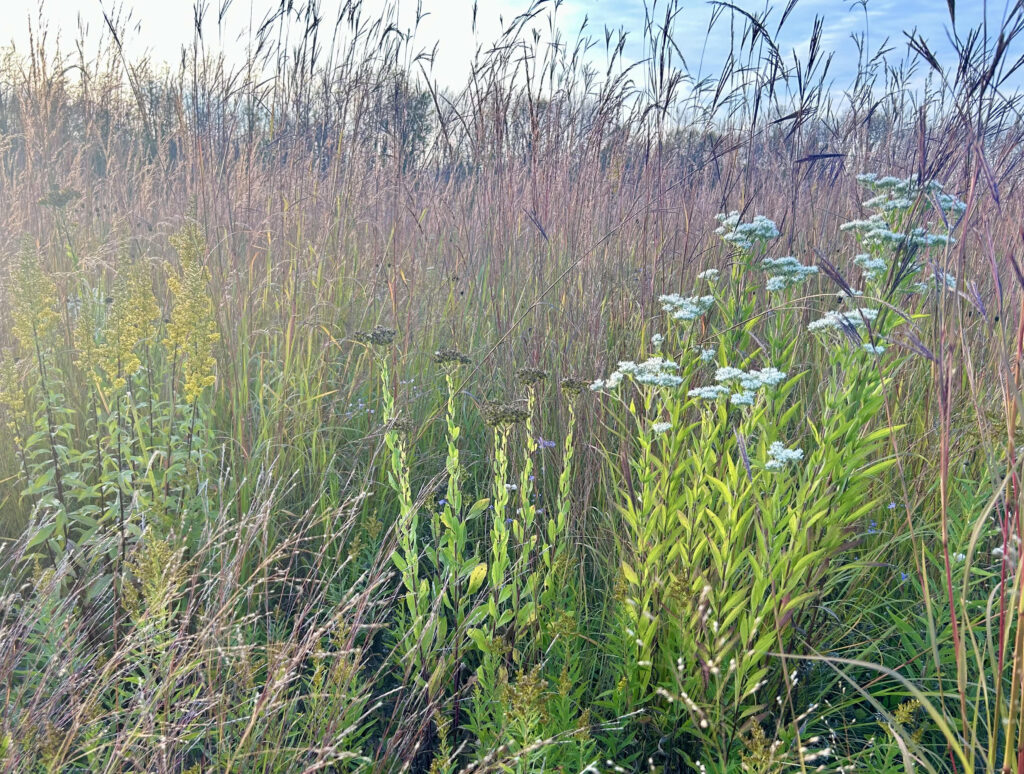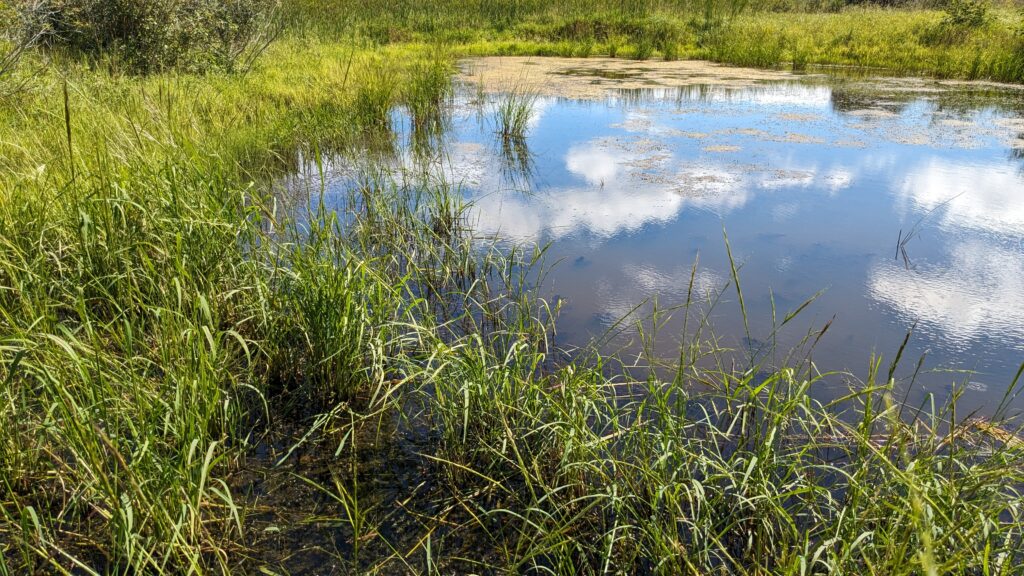Henry Wetland Preserve

Originally a drained agricultural field, our 79-acre Henry Wetland Preserve was donated in 2017 by Dr. Jonathan Henry with the shared vision of converting it back to wildlife habitat. Woodland Dunes was able to secure funding through WDNR’s Wisconsin Wetland Conservation Trust (WWCT) to hire environmental contracting group Stantec Consulting Services to design, construct, and establish our new wetland. The restoration process involved restoring site hydrology by removing old agricultural drainage tiles, moving earth to build unique microsite topography, sowing diverse seed mixes across the site, and planting native trees and shrubs. By the end of 2024, our Henry Wetland Preserve had become a diverse wetland matrix of wet meadow, shrub-carr, hardwood swamp, and mesic prairie that boasts over 150 species of plants and 75 species of birds. You can enjoy this beautifully restored site by hiking our 0.75 mile Blazing Star Trail or by stopping by the viewing platform.
Wild Rice Success

Manoomin or wild rice (Zizania plaustris) has a long history as an important species to humans. It is found in the lakes and rivers of the upper Great Lakes, although this distribution has decreased over time from pollution, development, and altered water regimes.
Starting in 2021, Woodland Dunes, Wisconsin Sea Grant, UW Green Bay, and Ducks Unlimited have partnered on a wild rice restoration effort in Two Rivers. Historically, wild rice was likely found in many of the coastal marshes and river mouths of Lake Michigan. This seeding aims to bring back wild rice in the West Twin River for cultural reasons and to enhance our fish and wildlife habitat and food sources.
The seeding effort continues with careful consideration about future locations based on monitoring. By evaluating the success of our efforts, we’ll continue to adapt and focus on where we can create the greatest impact with this important native plant species.

